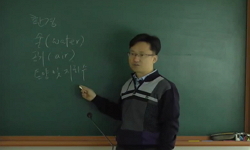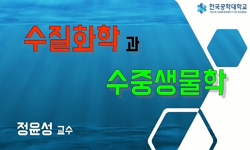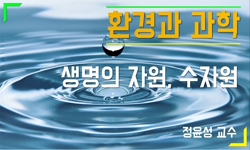- CONTENTS
- Preface = ⅵ
- Contributors = ⅶ
- Chapter 1. Scope and Summary / by David C. L. Lam
- 1.1 Introduction = 1-1
다국어 입력
あ
ぁ
か
が
さ
ざ
た
だ
な
は
ば
ぱ
ま
や
ゃ
ら
わ
ゎ
ん
い
ぃ
き
ぎ
し
じ
ち
ぢ
に
ひ
び
ぴ
み
り
う
ぅ
く
ぐ
す
ず
つ
づ
っ
ぬ
ふ
ぶ
ぷ
む
ゆ
ゅ
る
え
ぇ
け
げ
せ
ぜ
て
で
ね
へ
べ
ぺ
め
れ
お
ぉ
こ
ご
そ
ぞ
と
ど
の
ほ
ぼ
ぽ
も
よ
ょ
ろ
を
ア
ァ
カ
サ
ザ
タ
ダ
ナ
ハ
バ
パ
マ
ヤ
ャ
ラ
ワ
ヮ
ン
イ
ィ
キ
ギ
シ
ジ
チ
ヂ
ニ
ヒ
ビ
ピ
ミ
リ
ウ
ゥ
ク
グ
ス
ズ
ツ
ヅ
ッ
ヌ
フ
ブ
プ
ム
ユ
ュ
ル
エ
ェ
ケ
ゲ
セ
ゼ
テ
デ
ヘ
ベ
ペ
メ
レ
オ
ォ
コ
ゴ
ソ
ゾ
ト
ド
ノ
ホ
ボ
ポ
モ
ヨ
ョ
ロ
ヲ
―
http://chineseinput.net/에서 pinyin(병음)방식으로 중국어를 변환할 수 있습니다.
변환된 중국어를 복사하여 사용하시면 됩니다.
예시)
- 中文 을 입력하시려면 zhongwen을 입력하시고 space를누르시면됩니다.
- 北京 을 입력하시려면 beijing을 입력하시고 space를 누르시면 됩니다.
А
Б
В
Г
Д
Е
Ё
Ж
З
И
Й
К
Л
М
Н
О
П
Р
С
Т
У
Ф
Х
Ц
Ч
Ш
Щ
Ъ
Ы
Ь
Э
Ю
Я
а
б
в
г
д
е
ё
ж
з
и
й
к
л
м
н
о
п
р
с
т
у
ф
х
ц
ч
ш
щ
ъ
ы
ь
э
ю
я
′
″
℃
Å
¢
£
¥
¤
℉
‰
$
%
F
₩
㎕
㎖
㎗
ℓ
㎘
㏄
㎣
㎤
㎥
㎦
㎙
㎚
㎛
㎜
㎝
㎞
㎟
㎠
㎡
㎢
㏊
㎍
㎎
㎏
㏏
㎈
㎉
㏈
㎧
㎨
㎰
㎱
㎲
㎳
㎴
㎵
㎶
㎷
㎸
㎹
㎀
㎁
㎂
㎃
㎄
㎺
㎻
㎽
㎾
㎿
㎐
㎑
㎒
㎓
㎔
Ω
㏀
㏁
㎊
㎋
㎌
㏖
㏅
㎭
㎮
㎯
㏛
㎩
㎪
㎫
㎬
㏝
㏐
㏓
㏃
㏉
㏜
㏆
https://www.riss.kr/link?id=M8009110
- 저자
-
발행사항
Reston, VA: American Society of Civil Engineers, c1999
-
발행연도
1999
-
작성언어
영어
- 주제어
-
DDC
551.48/2/0977 판사항(21)
-
ISBN
0784404135
-
자료형태
일반단행본
-
발행국(도시)
Virginia
-
서명/저자사항
Potential climate change effects on Great Lakes hydrodynamics and water quality / edited by David C.L. Lam and William M. Schertzer.
-
형태사항
1 v. (various pagings): ill., maps; 23 cm.
-
일반주기명
Includes bibliographical references.
- 소장기관
-
0
상세조회 -
0
다운로드
부가정보
목차 (Table of Contents)
- CONTENTS
- Preface = ⅵ
- Contributors = ⅶ
- Chapter 1. Scope and Summary / by David C. L. Lam
- 1.1 Introduction = 1-1
- 1.2 Scope of the Report = 1-2
- 1.3 Summary of the Chapters = 1-3
- 1.4 Reference = 1-4
- Chapter 2. Climate and Lake Responses / by William M. Schertzer ; Thomas E. Croley Ⅱ
- 2.1 Introduction = 2-1
- 2.2 Great Lakes Physical Characteristics = 2-3
- 2.3 Climatic Measurement Networks = 2-6
- 2.3.1 Land observations = 2-6
- 2.3.2 Lake observations = 2-6
- 2.3.3 Over-lake meteorological fields = 2-7
- 2.4 Great Lakes Basin Climatic Characteristics = 2-8
- 2.4.1 Air mass circulation and storms = 2-8
- 2.4.2 Precipitation = 2-9
- 2.4.3 Air temperature = 2-11
- 2.4.4 Water temperature = 2-13
- 2.4.5 Winds = 2-15
- 2.4.6 Humidity vapor pressure and dew-point temperature = 2-20
- 2.4.7 Cloudiness and fog = 2-23
- 2.4.8 Ice cover = 2-24
- 2.5 Regional Climatological Modeling and Fluctuations = 2-25
- 2.5.1 Mesoscale investigations = 2-25
- 2.5.1.1 Lake and land breeze = 2-26
- 2.5.1.2 Lake effect snow storms = 2-26
- 2.5.1.3 Major storm events = 2-27
- 2.5.1.4 Cold front passage = 2-27
- 2.5.2 Lake heat budget and thermal responses = 2-28
- 2.5.2.1 Lake heat budget = 2-28
- 2.5.2.2 Climatic effect on large lake annual thermal cycle = 2-32
- 2.5.2.3 Climate (heating and wind) effect on thermal stratification = 2-33
- 2.5.2.4 Climate (wind) forced up-welling and down-welling events = 2-34
- 2.5.3 Lake levels and flows = 2-35
- 2.5.3.1 Great Lakes water balance = 2-35
- 2.5.3.2 Lake level fluctuation = 2-35
- 2.5.3.3 Connecting channel flows, diversions and flushing time = 2-36
- 2.5.4 Great Lakes hydrology and modeling = 2-37
- 2.5.4.1 Runoff modeling = 2-38
- 2.5.4.2 Precipitation = 2-39
- 2.5.4.3 Lake thermodynamics = 2-39
- 2.5.4.4 Great Lakes net basin supply = 2-41
- 2.5.4.5 Lake levels and flows = 2-44
- 2.6 Climate Change and Regional Scenarios = 2-44
- 2.6.1 Global climate simulations = 2-44
- 2.6.2 Global circulation models (GCM's) = 2-45
- 2.6.3 GCM limitations to regional-scale application = 2-45
- 2.6.4 Regional-scale climate scenarios = 2-47
- 2.7 Climate Change Impacts = 2-49
- 2.7.1 Lake responses to a warm year climate condition = 2-49
- 2.7.2 Response of Lake Ontario to steady-state GCM scenario = 2-50
- 2.7.3 Climate impacts on hydrology (steady-states/transient models) = 2-54
- 2.7.3.1 GLERL-EPA 2xCO₂ climate impacts = 2-54
- 2.7.3.2 GLERL-IJC 2xCO₂ climate impacts = 2-56
- 2.7.4 Great Lakes response to transposed climates = 2-57
- 2.7.4.1 Climate transposition scenarios = 2-57
- 2.7.4.2 Lake evaporation increases = 2-59
- 2.7.4.3 Soil moisture and runoff reductions = 2-59
- 2.7.4.4 Net basin supply decreases = 2-61
- 2.7.4.5 Net basin supply variability increases = 2-61
- 2.7.4.6 Reduced turnover frequency = 2-61
- 2.7.4.7 Lake effects = 2-62
- 2.7.4.8 Lake levels and outflows = 2-62
- 2.8 Potential Impacts of Global Climate Change on Lake Hydrothermal Dynamics in Other Climate Regimes = 2-62
- 2.8.1 Hypothetical lake responses to climate change = 2-63
- 2.8.2 Response of lakes in sensitive regions to climatic change = 2-64
- 2.9 Summary = 2-64
- 2.10 References = 2-66
- Chapter 3. Lake Thermodynamics / by Michael J. McCormick ; David C. L. Lam
- 3.1 Introduction = 3-1
- 3.2 Mixed Layer Models = 3-4
- 3.2.1 ML2.5 model = 3-6
- 3.2.2 RWG model = 3-7
- 3.2.3 RT model = 3-8
- 3.3 Model Comparisons and Performance = 3-9
- 3.4 Climate Change Inferences = 3-10
- 3.5 References = 3-13
- 3.6 Appendix - Basic Theory = 3-17
- Chapter 4. Large-scale Circulation / by Dmitry Beletsky ; Kwang K. Lee ; David J. Schwab
- 4.1 Introduction = 4-1
- 4.2 Annual Thermal Cycle = 4-3
- 4.3 Short-term Variability = 4-3
- 4.3.1 Storm surges seiches, upwelling, low-frequency waves, and eddies = 4-4
- 4.3.1.1 Storm surge = 4-4
- 4.3.1.2 Surface seiche = 4-5
- 4.3.1.3 Internal seiches and coastal upwelling = 4-6
- 4.3.1.4 Topographic wave = 4-8
- 4.3.1.5 Mesoscale eddies = 4-8
- 4.3.2 Lake-wide circulation modeling = 4-9
- 4.3.2.1 Dynamic height method = 4-9
- 4.3.2.2 Barotropic models = 4-10
- 4.3.2.3 Baroclinic models = 4-11
- 4.3.2.4 Model accuracy and predictability = 4-12
- 4.3.3 Coastal zone modeling = 4-13
- 4.3.3.1 Empirical models = 4-13
- 4.3.3.2 Fine resolution coastal zone models = 4-13
- 4.3.4 Great Lakes Forecasting System = 4-15
- 4.3.4.1 System design = 4-16
- 4.3.4.2 Coast Watch = 4-17
- 4.3.4.3 Numerical models = 4-18
- 4.3.4.4 Products = 4-18
- 4.3.4.5 Evaluation of results = 4-18
- 4.3.4.6 Plans = 4-20
- 4.4 Long-term Variability = 4-21
- 4.4.1 Observed summer, winter and annual circulation in the Great Lakes = 4-21
- 4.4.1.1 Summer circulation = 4-24
- 4.4.1.2 Winter circulation = 4-27
- 4.4.1.3 Annual circulation = 4-29
- 4.4.2 Lake-wide circulation modeling = 4-29
- 4.4.2.1 Barotropic models = 4-29
- 4.4.2.2 Early baroclinic models = 4-29
- 4.4.2.3 Modeling in the 1990's = 4-30
- 4.4.3 Impact of climate change on circulation = 4-31
- 4.5 Conclusions = 4-33
- 4.6 References = 4-34
- Chapter 5. Wind-Waves on Large Lakes / by Paul C. Liu
- 5.1 Introduction = 5-1
- 5.2 Physical and Statistical Description of Waves = 5-3
- 5.2.1 Conventional assumptions = 5-3
- 5.2.2 Wind waves on the Great Lakes = 5-4
- 5.2.3 Wave energy spectrum = 5-5
- 5.2.4 The probability structures of lake surface waves = 5-6
- 5.2.5 Orbital wave motion and components = 5-7
- 5.2.6 Wind waves and storm surges = 5-7
- 5.3 State-of-the-Art Modelling of Wind Waves = 5-8
- 5.3.1 Historical sketch of wave model developments = 5-8
- 5.3.2 Momentum balance equation and the Donelan/GLERL model = 5-9
- 5.3.3 Energy balance equation and the WAM model = 5-10
- 5.3.4 Model comparisons = 5-11
- 5.3.5 Shallow water modifications = 5-11
- 5.4 Climate Effects on Wind Waves = 5-13
- 5.5 Conclusions = 5-14
- 5.6 References = 5-15
- Chapter 6. Great Lakes Ice Cover / by Raymond A. Assel
- 6.1 Introduction = 6-1
- 6.2 Annual Ice Cycle = 6-2
- 6.2.1 Atmospheric and limnological influence on Great Lakes ice cover = 6-2
- 6.2.2 Seasonal progression of the ice cover = 6-4
- 6.2.2.1 The general pattern = 6-4
- 6.2.2.2 Autumn water cooling and the annual temperature cycle = 6-6
- 6.2.2.3 Ice formation and ice types = 6-7
- 6.2.2.4 Interannual variation of annual maximum ice cover = 6-8
- 6.2.2.5 Factors affecting the loss of ice cover in spring = 6-9
- 6.2.2.6 Lake superior ice formation and loss pattern = 6-9
- 6.2.2.7 Lake Michigan ice formation and loss pattern = 6-9
- 6.2.2.8 Lake Huron ice formation and loss pattern = 6-9
- 6.2.2.9 Lake Erie ice formation and loss pattern = 6-10
- 6.2.2.10 Lake Ontario ice formation and loss pattern = 6-10
- 6.2.3 Ice classification = 6-10
- 6.2.4 Ice thickness = 6-11
- 6.3 Ice Hazards = 6-12
- 6.3.1 Winter navigation = 6-12
- 6.3.2 Ice jams and shore installation = 6-12
- 6.4 Affects of Ice on the Lake Ecosystem = 6-13
- 6.4.1 Effects of changes in ice cover on the winter ecology of Lake Michigan = 6-13
- 6.4.2 Spring coastal plume in southern Lake Michigan = 6-14
- 6.5 Climatic Trends = 6-14
- 6.5.1 Nearshore ice cover regime = 6-14
- 6.5.2 Open lake ice cover regime = 6-15
- 6.6 Impact of Climate Change = 6-16
- 6.6.1 Lake ice cover regime for double carbon dioxide scenarios = 6-16
- 6.6.2 Bay and harbor freeze-up and break-up dates = 6-17
- 6.7 References = 6-18
- Chapter 7 Water Quality / by Joseph F. Atkinson ; Joseph V. De Pinto ; David C. L. Lam
- 7.1 Introduction = 7-1
- 7.2 General Considerations in Water Quality Modeling Pertaining to Large Lakes = 7-4
- 7.2.1 Parameters of interest = 7-4
- 7.2.2 Scale consideratons, model complexity = 7-6
- 7.3 Transport and Mixing Processes = 7-7
- 7.3.1 Wind and pressure effects, horizontal circulation = 7-8
- 7.3.2 Vertical mixing and stratification = 7-11
- 7.4 Internal Sources and Sinks = 7-15
- 7.4.1 Effects on biochemical processes = 7-15
- 7.5 Boundary Transport = 7-16
- 7.5.1 Air/water mass transfer = 7-16
- 7.5.2 Benthic sources = 7-18
- 7.6 External Loadings = 7-19
- 7.7 Lake Erie Water Quality model = 7-20
- 7.7.1 Heat flux - thermocline model = 7-20
- 7.7.2 Biochemical model = 7-21
- 7.7.3 Lake Erie simulation results = 7-23
- 7.7.4 Preliminary results of climate change effects on lower Great Lakes water quality = 7-24
- 7.8 Green Bay Mass Balance Model = 7-26
- 7.8.1 GBTOX as a management tool = 7-30
- 7.8.2 Potential impacts of climate change = 7-32
- 7.9 Conclusion = 7-33
- 7.10 References = 7-34
- �
온라인 도서 정보
온라인 서점 구매
| 서점명 | 서명 | 판매현황 | 종이책 | 전자책 구매링크 | ||
|---|---|---|---|---|---|---|
| 정가 | 판매가(할인율) | 포인트(포인트몰) | ||||

|
Potential Climate Change Effects on Great Lakes Hydrodynamics and Water Quality (Paperback) |
판매중 | 63,360원 | 57,020원 (10%) | 1,720포인트 | |
- 포인트 적립은 해당 온라인 서점 회원인 경우만 해당됩니다.
- 상기 할인율 및 적립포인트는 온라인 서점에서 제공하는 정보와 일치하지 않을 수 있습니다.
- RISS 서비스에서는 해당 온라인 서점에서 구매한 상품에 대하여 보증하거나 별도의 책임을 지지 않습니다.














